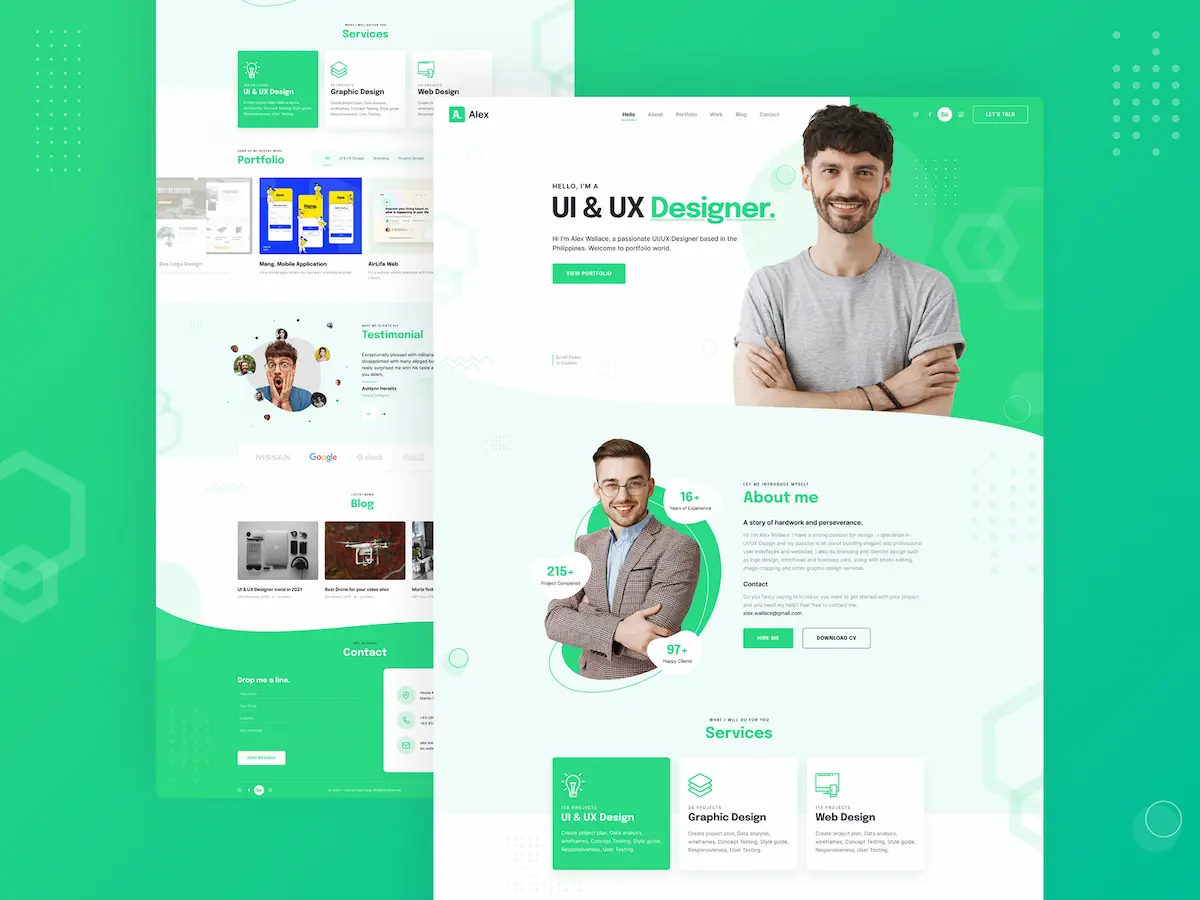More and more people are turning to freelance work in pursuit of a flexible work schedule.
What new freelancers might not realize, though, is the importance of an online portfolio that showcases your skills and experience.
Whether you’re a freelance web designer, sell photographic prints, or work as a writer, you’ll have a hard time reaching your target market without a well-crafted portfolio website.
There are hundreds of tips and tricks for building a great online portfolio. But to simplify things we’ve put together eight of the best bits of advice.
Pay Attention To User Interface And Functionality
If you think of a portfolio website the first thing that springs to mind is probably a catalogue of pictures, similar to a physical portfolio.
An online portfolio must be just as easy to navigate. If it isn’t, focus shifts away from your work. If you’re a freelancer who doesn’t usually deal with web design, consider getting guidance from a professional.
Your user interface design should also allow visitors to view your contact details without having to jump through hoops. Having good UX design is also a must. UI alone isn’t enough to make your portfolio accessible. The visual appeal must be matched with practicality.
K.I.S.S.
Keep it simple, stupid—a corollary of the previous point.
Clutter and non-essential elements divert attention away from your actual portfolio. The very purpose of a portfolio website is to showcase your work, so aim for an effective site design that directs users towards that.
Quality Over Quantity
Prospective clients don’t spend long looking at online portfolios, making it important to present only your best work.
Depending on your field of expertise, you should limit your portfolio to your most recent work.
Photographers and artists have more flexibility in that regard. However, pieces that have been published, exhibited, or commissioned should be chosen with care, just like a freelance writer should only display their most recent (and relevant) articles.
Introduce Yourself
Many websites have an “About me” page and for good reason.
Potential clients are more likely to trust people who introduce themselves; the absence of a short bio makes it harder to connect with your audience.
Just like your portfolio as a whole, your “About me” section should be relatively short and sweet, as website visitors tend to skim rather than absorb everything they read.
Introducing yourself on your portfolio site can also help potential clients relate to you.
If you’re a pet photographer, your bio could include a picture of you with your own pet. This immediately creates a connection between you and your audience.
Mobile-Friendly
These days more and more people use their smartphones to go online, rather than a PC or laptop.
This makes it crucial to build a portfolio website that looks good on a mobile device, and that is easy to navigate.
Some websites aren’t constructed with mobile screens in mind, which can be very frustrating to users who struggle to find their way through a cramped interface.
A simple (or even minimalist) user interface can also help when it comes to keeping your site accessible on mobile devices.
Testimonials
Some might say that a portfolio website isn’t the right place to have testimonials, but if you’re trying to attract clients, showing off some glowing reviews is a great idea.
Just like your portfolio as a whole, your list of testimonials shouldn’t be too lengthy. Aim for three or four punchy reviews from reputable clients.
Post Often – Fresh Material
Just like any website, an online portfolio does better when it’s regularly updated.
You don’t need to reconstruct your website every few weeks, but posting new examples of your work, your on-the-go projects, testimonials and content keeps visitors engaged.
When a site stagnates people lose interest pretty quickly.
The idea is for your site to continually attract traffic and interest rather than to be a once-off option for visitors.
Don’t Forget The Basics
A visually appealing online portfolio is great, but that alone isn’t enough to engage potential customers.
The UI and UX design should make it easy to find your way around the site not only in terms of viewing your work but to give visitors important details, such as contact information and a short breakdown of the services you offer.
It’s Time To Show Off
The bottom line is that a portfolio website must show potential clients your value in your chosen field.
A great online portfolio should display your very best work. But don’t forget to show visitors who you are: an individual with a unique style and exceptional talents.

